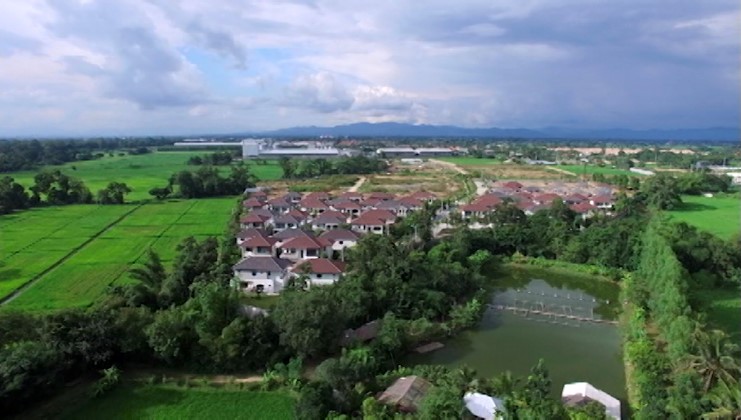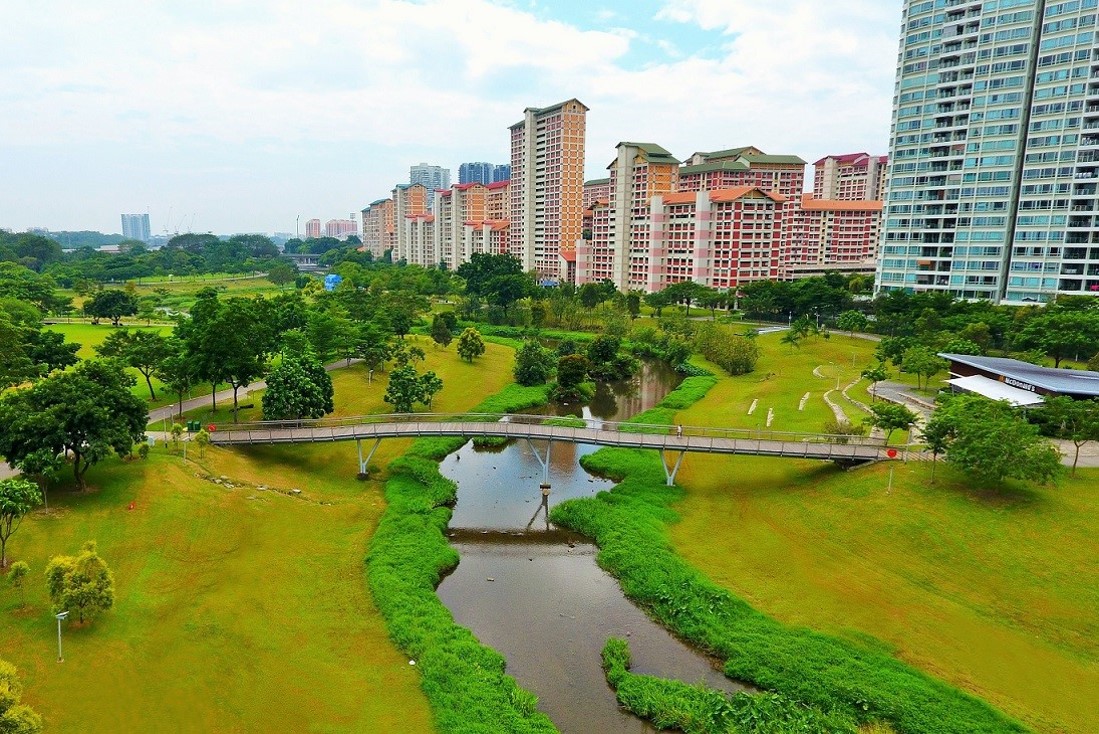An Odyssey of Two Cities: Coping with the growing pains of urbanisation
120,000 people in Asia are moving into urban cities every day, giving rise to the desperate need for rapid conversion of rural land. Urbanisation, handled wrongly, will not achieve the goal of lifting a city’s people out of poverty, but instead plunge them instead into a deeper abyss. How can governments transform their countries’ cities in a way that will respect their history and the way of life?
Chiang Mai and Singapore are two such cities that have faced the huge pressure of urbanisation at the turn of the late 20th century. A late bloomer, Chiang Mai’s land reforms have only resulted in uneven urban development. The case for the city’s spatial inequality was taken up by a group of MPA (Master in Public Administration) students at Lee Kuan Yew School for Public Policy for their Governance Study Project (GSP)1.
Chiang Mai's identity crisis: Is transforming the city causing more harm?
Google ‘Chiang Mai’ on TripAdvisor or Lonely Planet and you will be taken to forums full of praises referencing the culture and scenery beholden to visitors. Suitably called the ‘Rose of the North’, Chiang Mai is well-known for its raw rural beauty. For years, agriculture has also governed the use of the land.
Alas, the unrelenting wave of globalisation spares no one, and with it, the change of economy and way of living. Troubling reports 2 of Chiang Mai’s development have risen in the recent decades. On the news, we hear the Thai government’s plans for the city such as the Chiang Mai Creative City, SMART City, MICE city and so on. These exciting developments seem to point towards a rapid urbanisation of Chiang Mai as a secondary city, and one would imagine a modernised, efficient, green city blessed with the wonders of nature.
What greeted the MPA students as they did their onsite study last year was quite a different scenario. Urbanisation took on the form of a peculiar trend of gated residential estates popping out amidst the expanses of agricultural fields. Within the high walls of these enclaves were well-manicured, open spaces, and residents could enjoy the country side scenery but yet be guaranteed privacy and protection. These built up segments, modern and elegant in themselves, seemed an awkward fit in the bigger picture. The high walls cut off links with immediate neighbouring villagers, and whilst their very fields were the reason for the location of the residential area, the residents offered little or nothing to the livelihood of the villagers.

Gated communities are separated from paddy fields by high walls. 2
The isolation of communities from two different social and economic backgrounds gave an anecdotal example of the spatial inequality that is taking place in Chiang Mai. The unequal distribution of resources causes the disadvantaged in Chiang Mai to sink deeper into the poverty well. Accessibility to amenities are not evenly implemented, with services like healthcare lacking in poorer enclaves. The lack of social cohesion due to such disparities within and between neighbourhoods is not desirable and has proven to be problematic in similar situations.
The rapid development of land results in land use that can be locked for generations, and land reforms not done the right way are often not easily reversible.
The land reforms in Chiang Mai have so far not been as effective as hoped. The implementation of the Comprehensive Plan for urban land development by the government has not been working well due to several reasons. Firstly, the plan’s land zoning displayed a failure to understand the infrastructural capabilities of the agricultural system, where the Mae Kuang river system should be preserved for agricultural land use. Roads crossing the agricultural area disrupted the gravity fed irrigation system. Secondly, the gated communities mentioned earlier sprouted along the radial streets, violating the original land use for agriculture.
Singapore's identity strengthened through urbanisation
Before Chiang Mai was jolted into intensive urbanisation towards the end of the 20th century, another small city nearby was winning the praises of world leaders for its quick transition from a 3rd world country to a 1st world city state. Singapore’s success within a few decades highlighted the foresight of its leaders in implementing policies and plans that were realistic but yet sustainable. The priorities of the government in building the country from scratch mirrored Maslow’s hierarchy of needs, and this proved to be great wisdom. The Land Acquisition Act (LAA) of 1966 allowed the government to have full control of the land use. This allowed an accurate assessment of proper housing required not just to lift its people from slum dwellings but to also sustain affordable housing for its population in the years to come.
Singaporeans would not deny that there is still inequality between different regions in Singapore, where the average income levels of certain estates are higher than that of other estates. However, the presence of sufficient community amenities and public events have played a significant role in bridging social divides. In recent years, urban landscaping has been taken to a new level in the country, including the enhancement of liveability and sustainability of residential areas. Deliberate efforts have been made to look into implementing public spaces and ensuring that amenities are accessible to all. The Master Plan 2014 by Urban Redevelopment Authority (URA) sets out development of 360km of park connectors and 100km of waterways for recreational activities as well as 22 projects under the Active, Beautiful and Clean (ABC) projects around the island.

Kallang River @ Bishan-Ang Mo Kio Park
Source: https://www.pub.gov.sg/abcwaters/explore
There is still room for improvement, but in relation to the rest of the world, Singapore’s public housing facilities have provided a clean and safe environment for its citizens to dwell in.
Two odysseys: "Same same, but different"?
As a secondary city, Chiang Mai is destined to play a major role in the development of the nation. How can the land reforms and policies be further tweaked to factor in the agricultural infrastructure that has for years supported the needs of the land on one hand, and on the other, support the increasing pressure of urbanisation? Some would say that the comparison between Chiang Mai with its young neighbour Singapore is not a fair one. Still, Singapore’s phenomenal growth, and its ability to prosper in a multicultural setting has shown that countries can distil good practices from the policies and strategies used by Singapore’s government for its route to urbanisation. After a year-long in-depth analysis, the MPA students peeled off the layers of complexity, proposing both long term and short term solutions with reference to the Singapore model.
Long term solution: Better accuracy in allocating land use among the zones, and stronger political will in enforcing the policies.
United Nations’ 2030 Agenda for Sustainable Development has the ambitious yet noble aim of transforming the world in the form of 17 Sustainable Development Goals (SDGs). SDG 11 seeks to build sustainable cities and communities, making them inclusive, safe and resilient. Specifically, three targets within SDG 11 (11.1 – 11.3) addressed aspects of the spatial inequality woes that Chiang Mai is facing, whereby sustained long-term approaches by the government would be required in the following areas.
Safe, affordable housing and basic amenities. Where slums have taken root due to the unequal distribution of resources, redevelopment plans for proper and affordable housing needs to be made for the future growth of the city. A high degree of accuracy is required in the extrapolation of growth to ensure that land zoning does not become redundant again. Learning from the Singapore model, a sustainable scheme of public housing should be introduced. This was also addressed the United Nations Development Plans (UNDP) for Thailand.
Safe, affordable, accessible and sustainable transport systems. Learning from previous failures of erecting transport routes that interfered with agricultural land use, future building of routes should consider the historical and long standing use of the land. This necessitates the building of proper transport infrastructure, particularly the mass rapid transit.
Enhance inclusive and sustainable urbanisation and capacity for participatory, integrated and sustainable human settlement planning and management. Appropriate land use planning and practices have to be implemented. There needs to be strict enforcement regarding the use of land – gated communities and slums cannot be allowed to sprout spontaneously where the transport networks have sprung up. Sustainable and holistic urban planning should keep in mind both housing and transport needs.
Short term solution: Create community spaces.
Another target within SDG 11 (11.7) was to provide universal access to safe, inclusive and accessible green and public spaces. The team proposed an easily achievable goal of creating community shared spaces, which was to use the existing waterways as they serve as good natural infrastructure that can be converted easily into recreational areas. With proper training and growing of local expertise to build and maintain the waterway, this is an affordable solution for the creation of common spaces to overcome the social divide.
Is the goal of sustainable urbanisation within reach?
Land reforms are often complex because of the multiple issues involved. Chiang Mai’s commitment to her success in lifting the city out of its current situation will require deep political will. As the solutions cut across the purview of many agencies, there needs to be close collaboration between different government departments, and possibly non-state actors. Investment in capacity building programmes might be a necessity to build local expertise in the various skillsets required and ensure sustainability of the projects. Importantly, outreach efforts to educate the locals of the rationale behind these plans will help to alleviate apprehensions in the landscape changes taking place, temporal inconveniences due to construction works, and inculcate long-term ownership and responsibility in the use of public commodity.
Chiang Mai’s policy makers and planners have a critical role to play in ensuring that the city’s urban expansion results in sustainable and inclusive infrastructure, and making the right decisions today will prevent painful undoing from having to take place years later. An effective transformation will improve the lives of millions in the decades to come, and retain Chiang Mai’s longstanding reputation as the ‘Rose of the North’.
________________________
1The Governance Study Project (GSP) is a year-long team-based module for students studying the Masters in Public Administration at the Lee Kuan Yew School of Public Policy. Consisting of a study trip at the end of the first semester, the GSP connects the beginning to the end of the MPA degree programme, requiring students to put to use the knowledge and skills learnt in each module. The outcomes are detailed policy proposals based on rigorous primary and secondary research coupled with analysis and recommendations presented directly to stakeholders.
MPA students Prasanna V. Salian, Muhammad Majid, Ng Chye Wee, Ong Jiefang and Muhammad Fiaz Gul worked on the project for one year, submitting their final proposal titled: Spatial Inequality and Urbanisation: A Comparative Study of Chiang Mai and Singapore
For the actual proposal and as well as proposals from other projects, visit https://urbanpossibilities.live.
2 McGrath, B, Sangawongse, S, Thaikatoo, D & Corte, M. B (2017): ‘The architecture of the metacity: land use change, patch dynamics and urban form in Chiang Mai, Thailand’, Urban Planning, vol. 2, no. 1, pp. 53-71. Available from: ProQuest. [03 April 2018].